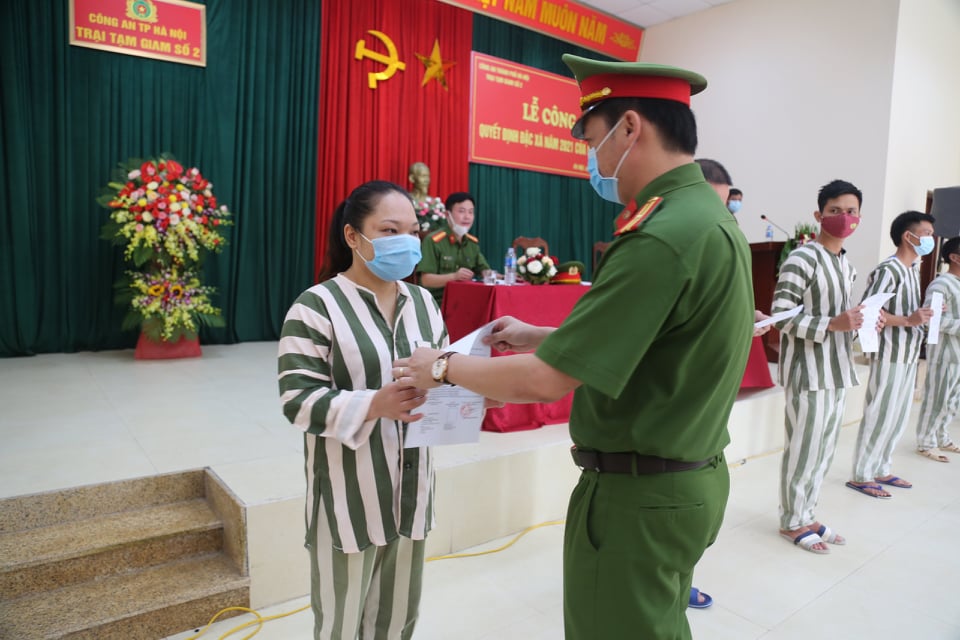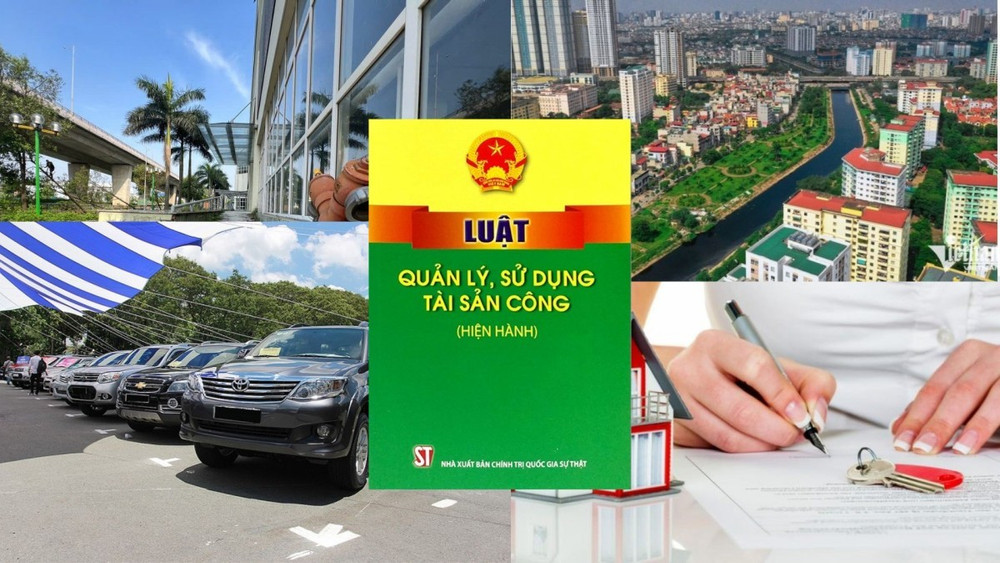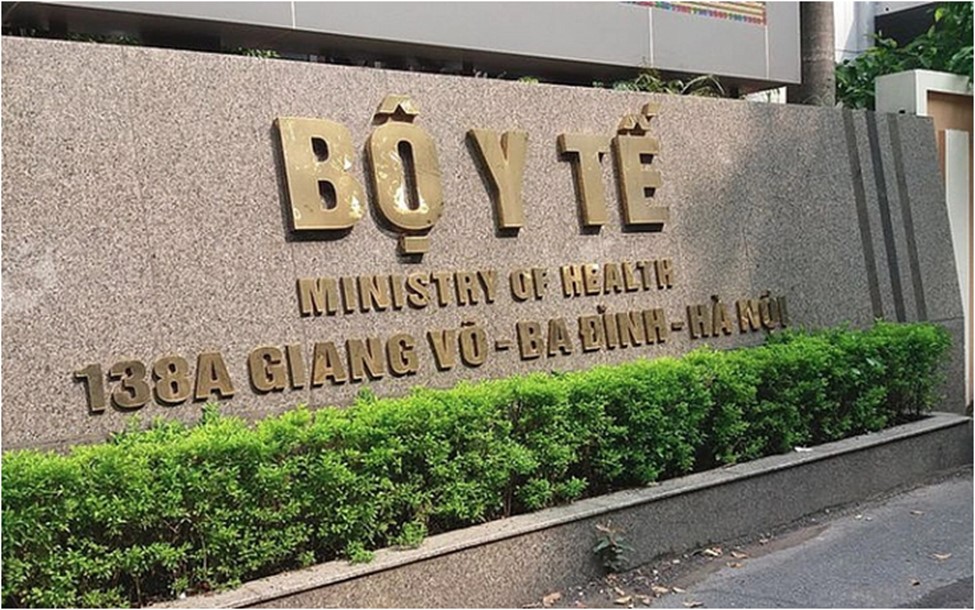Detailed regulations on types of land in the group of agricultural land and non-agricultural land in Vietnam from August 01, 2024
The article will provide detailed regulations on types of land in the group of agricultural land and non-agricultural land in Vietnam from August 01, 2024

Detailed regulations on types of land in the group of agricultural land and non-agricultural land in Vietnam from August 01, 2024 (Image from the internet)
On July 30, 2024, the Government of Vietnam issued Decree 102/2024/ND-CP detailing the implementation of certain provisions of the Land Law 2024.
1. Detailed regulations on types of land in the group of agricultural land in Vietnam
The group of agricultural land in Vietnam is detailed in Article 4 of Decree 102/2024/ND-CP as follows:
- Annual crop land is land used for cultivating crops that are sown, harvested, and complete their production cycle within no more than one year, including annual crops that are kept for future production. Annual crop land includes rice cultivation land and other annual crop land. Specifically:
+ Rice cultivation land is land used for cultivating one or more rice crops or rice combined with other legal land use purposes, with rice cultivation being primary. Rice cultivation land includes specialized rice cultivation land and other rice cultivation land, with specialized rice cultivation land being land used for two or more rice crops;
+ Other annual crop land is land used for cultivating annual crops other than rice.
- Perennial crop land is land used for cultivating crops that are sown once, grow for many years, and are harvested one or multiple times.
- Forestry land is land used for the purpose of management, protection, and development of special-use forests, protection forests, and production forests in accordance with forestry law, classified specifically as follows:
+ Special-use forest land is land on which there is a special-use forest according to the provisions of forestry law, or land allocated for the development of special-use forests;
+ Protection forest land is land on which there is a protection forest according to the provisions of forestry law, or land allocated for the development of protection forests;
+ Production forest land is land on which there is a production forest according to the provisions of forestry law, or land allocated, leased, or repurposed for the development of production forests.
- Aquaculture land is land used specifically for aquaculture purposes.
- Concentrated livestock land is land used for constructing livestock farms in separate areas as regulated by livestock law.
- Salt production land is land used for the purpose of producing salt from seawater.
- Other agricultural land includes:
+ Land for nurturing plant and animal species, and land for planting flowers and ornamental plants; land used for cultivation, livestock husbandry, and aquaculture for the purposes of study, research, and experiment;
+ Land used for constructing greenhouses and other buildings serving cultivation and livestock husbandry, including forms of cultivation and husbandry not directly on land;
+ Land for constructing facilities linked to agricultural production areas, including land for constructing rest houses, sheds, and camps for workers; land for constructing facilities for storing agricultural produce, pesticides, fertilizers, machinery, tools, and other auxiliary facilities.
2. Detailed Regulations on types of land in the group of non-agricultural land in Vietnam
The types of non-agricultural land in Vietnam are detailed in Article 5 of Decree 102/2024/ND-CP as follows:
(1) Residential land is land used for residential and other life-supporting purposes within a single parcel. Residential land includes:
- Rural homestead land is residential land within the administrative boundaries of a commune, except for homestead land involved in urban development projects according to urban and rural planning but still within the administrative boundaries of a commune.
- Urban homestead land is residential land within the administrative boundaries of a ward, commune-level town, or residential land in administrative borders involving urban development projects according to urban and rural planning.
(2) Land for construction of headquarters is used for building headquarters of Communist Party agencies, state agencies, Vietnam Fatherland Front, political-social organizations, political-social-professional organizations, social-professional organizations, social organizations, and other organizations established according to the law and assigned tasks or funded for regular operations by the State, except for premises of public service providers associated with works prescribed in subsection (4).
(3) Defense and security land is used for military bases, headquarters; national defense works, battlefields, and special defense-security works; stations, ports, airports, helipads, and structures serving military and police helicopter operations; military and security communication facilities; industrial, scientific, technological, cultural, and sports facilities serving national defense and security; warehouses for armed forces; shooting ranges, training grounds, weapon testing and destruction sites; training, professional training centers, convalescent homes, nursing homes, rehabilitation centers, medical facilities for armed forces; official residences of armed forces; detention centers; compulsory education establishments; remedial schools, labor, and vocational training centers for inmates, under the management of the Ministry of National Defense and Ministry of Public Security.
(4) Land for construction of public works includes the following:
- Land for cultural facilities is used for cultural structures like convention centers, theaters, cultural houses, cultural centers, cultural palaces, clubs, cinemas, circuses; symbolic, artistic works (outdoor statues, gates, squares, memorials...); children’s palaces, museums, exhibition halls, libraries, literary and artistic creation facilities, galleries, headquarters of art troupes, and other cultural works established or authorized by the State.
- Land for social facilities is used for social service structures like social work service centers, social protection facilities, medical-education-labor social centers, facilities assisting the elderly, disabled individuals, children under special circumstances; and other social service facilities established or authorized by the State.
- Land for healthcare facilities is used for healthcare structures such as hospitals, maternity homes, health centers, medical stations, other medical examination and treatment facilities; rehabilitation facilities, geriatric facilities, preventive medical facilities; population centers; quality testing, scientific research facilities in the health sector; animal breeding, medicinal plant cultivation for healthcare purposes; standardization and calibration facilities; forensic medicine facilities; pharmaceutical production facilities; medical equipment production facilities; HIV/AIDS and mental health treatment facilities, and other healthcare facilities established or authorized by the State, including areas used for offices, commercial services such as pharmacies, restaurants, lodgings for patients’ families, and paid parking within healthcare facilities, except those under the Ministry of National Defense and Ministry of Public Security.
- Land for educational and training facilities is used for educational and training structures, including preschools, general education institutions, continuing education institutions, special schools, higher education institutions, vocational education institutions, and other educational and training facilities established or authorized by the State, including areas used for offices, dormitories for students, shops selling educational supplies, restaurants, parking lots, and other functional areas within educational and training facilities, except those under the Ministry of National Defense and Ministry of Public Security.
- Land for physical training and sports facilities is used for sports structures like sports complexes, athlete training centers, sports centers, stadiums; golf course fairways, practice areas in golf courses, green systems, water surfaces, landscapes in golf courses, management, operation, utilization, and business structures (except for accommodation and services for golfers); swimming pools and other training, coaching, and competition sports facilities; areas used for offices, ticket sales, souvenir shops, sports equipment sales, parking lots, and other facilities serving sports activities within sports facilities, except those under the Ministry of National Defense and Ministry of Public Security.
- Land for scientific and technological facilities is used for scientific and technology, innovation structures of organizations like research and development, scientific and technological services organizations; startup innovation support organizations; technology incubators, science and technology business incubators; incubators, technical facilities, innovation centers, startup innovation centers; innovation support centers; laboratories; research facilities of science and technology enterprises; science and technology parks; science museums; standard measurement systems; information and statistical infrastructure systems; shared working spaces for startup innovation and physical-technical facilities of other science, technology and innovation organizations and facilities established or authorized by the State.
- Land for environmental facilities is used for environmental protection and biodiversity conservation works, including environmental incident prevention and response works, environmental monitoring works; biodiversity conservation monitoring works, and other environmental protection works.
- Land for hydrometeorological facilities is used for hydrometeorological structures, including meteorological and hydrological stations, climate change monitoring stations, and other hydrometeorological structures.
- Land for diplomatic facilities is used for constructing diplomatic headquarters, including diplomatic missions (embassies), foreign consular missions (consulates), representative offices of international organizations in Vietnam, representative offices of foreign diplomatic organizations, and offices of foreign non-governmental organizations with diplomatic functions; diplomatic corps facilities managed by the State.
- Land for other public works includes land for other public works established according to regulation not stipulated in Points a, b, c, d, e, g, h, and i of subsection 4 in Article 5 of Decree 102/2024/ND-CP.
(5) Land for non-agricultural production and business includes:
- Industrial zone, industrial cluster land is used for constructing industrial production, handicraft, information technology zones; including workers’ accommodation in industrial zones, service structures for industrial production, handicraft, infrastructure works, and other structures within industrial zones, industrial clusters, information technology zones.
- Commercial, service land is used for constructing business, service, commercial facilities and other structures serving business, service, commercial purposes; accommodation and services for golfers (except for golf course fairways, practice areas in golf courses, green systems, water surfaces, landscapes, management, operation, utilization, and business structures in golf courses); headquarters, representative offices of economic organizations; land for warehouses, storage areas of economic organizations outside production zones; public beaches associated with business, service facilities.
- Land for non-agricultural production facilities is used for constructing industrial, handicraft production works not stipulated in Point a of subsection 5 Article 5 of Decree 102/2024/ND-CP, including headquarters and other structures serving production or employees attached to production facilities; land for courtyards, warehouses, storage areas associated with production zones.
- Land for mineral activities is used for exploration, exploitation, or mining associated with mineral processing, constructing structures serving mining activities, including working houses, rest houses between shifts, and other structures serving employees associated with mining zones, and safety corridors in mining activities approved by competent state agencies according to mining law, investment law, and other related law.
(6) Land for public purposes includes:
- Transportation works land is used for constructing transportation structures, including expressways, roads, urban roads, rural roads (including bypasses, rescue roads, and field roads for common use), bus stops, passenger drop-off/pick-up points, toll stations, warehouse facilities, parking garages, etc.; ferry docks, bus stations, toll booths, rest stops; railways, railway stations; trams; various bridges and tunnels for transportation; inland waterways, maritime works; airports, including structures for regular state agency operations and aviation infrastructure, take-off, landing areas, and aircraft parking; cable lines and cable stations; fishing ports, dry ports; offices and business services within stations, ports, bus terminals; safety corridors for transportation work for extraction areas.
- Irrigation works land is used for constructing structures for irrigation purposes, including dikes, embankments, sluices, dams, spillways; water supply, drainage systems primarily for agricultural production, including safety corridors that require land use; headworks including working houses, warehouses, production, repair, and maintenance facilities within the scope of irrigation works.
- Water supply and drainage works land is used for constructing water plants, pumping stations, various water tanks, water towers; water supply and drainage pipelines; structures for water, sludge, sediment management including working houses, warehouses, production, repair, and maintenance facilities within water supply and drainage works that aren’t in industrial clusters, industrial zones, information technology zones, export processing zones, or other concentrated production/business zones.
- Land for disaster prevention and control works is used for constructing disaster prevention and control structures, including structures for flood, drought, saltwater intrusion, erosion, landslide, flash flood prevention, lightning protection; storm shelters for boats, evacuation houses and other disaster prevention and control structures.
- Land with historical-cultural sites, scenic spots, and natural heritage includes land with ranked or listed heritage by provincial People's Committees according to cultural heritage law.
- Land for waste treatment works is used for waste transfer stations, landfill sites, integrated treatment zones, treatment facilities, hazardous waste treatment facilities including working houses, warehouses, production, repair, and maintenance facilities within waste treatment works.
- Land for energy and public lighting works includes land for power plants and auxiliary structures; dams, dikes, water conduits for hydropower plants; transmission lines, substations; utility structures, repair, maintenance facilities within power plants; public lighting systems; oil and gas extraction platforms, processing facilities, refineries, gas processing plants, biofuel plants; crude oil storage, fuel pumping stations, pipelines, safety corridors ensuring technical safety not used for other purposes; utility structures, repair, maintenance facilities within oil, gas, processing facilities or biofuel plants.
- Postal, telecommunications, information technology infrastructure works land (excluding concentrated information technology zones as stated in Point a subsection 5 Article 5 of Decree 102/2024/ND-CP) is used for constructing houses, stations, antenna pillars, cable poles, ducts, manholes, cabling systems, and other related technical structures; data centers; safety corridors ensuring technical safety for telecommunications serving IT; postal centers; commune postal-cultural points; utility structures, repair, maintenance facilities within postal, telecommunications, IT works.
- Residential and wholesale market land is for constructing markets as per market development and management law.
- Land for public parks, recreational areas, and community activities is used for constructing recreational or community activity structures or open spaces primarily for public use activities such as parks, gardens, beaches, and other public recreational areas (excluding cinemas, circuses, theaters, and other service game facilities); meeting halls and structures fitting local community customs.
(7) Religious land is used for constructing religious structures, including temples, churches, chapels, mosques, shrines, Buddhist worship houses, statues, steles, and towers in religious establishments; religious training facilities; headquarters of religious organizations, sub-organizations, and other legitimate religious structures.
(8) Belief land is used for constructing belief structures, including communal houses, temples, shrines, memorial houses, family worship halls, statues, steles, and towers in belief establishments; temples not stated in Clause 1 Article 213 of Land Law 2024, Clause (7), and other belief structures.
(9) Cemetery land, funeral homes, cremation facilities, and ash storage facilities land are used for concentrated burial sites, funeral homes, cremation structures, ash storage facilities, and other auxiliary structures related to burial, cremation, and ash storage.
(10) Land with specialized water surfaces includes water surfaces from hydrological features such as ponds, lakes, lagoons, wetlands, rivers, streams, canals, and ditches identified for specific uses not primarily for aquaculture.
(11) Other non-agricultural land includes land with structures for production, business, or land assigned, leased, or permitted for use purposes without structures and not covered by Clause (7) subsection 4 and Clauses (1) to (10) above.
- Key word:
- Non-agricultural land
- agricultural land
- land
- Vietnam
- Number of deputy directors of departments in Vietnam in accordance with Decree 45/2025/ND-CP
- Cases ineligible for pardon in Vietnam in 2025
- Decree 50/2025 amending Decree 151/2017 on the management of public assets in Vietnam
- Circular 07/2025 amending Circular 02/2022 on the Law on Environmental Protection in Vietnam
- Adjustment to the organizational structure of the Ministry of Health of Vietnam: Certain agencies are no longer listed in the organizational structure
- Vietnam aims to welcome 22-23 million international tourists in Vietnam in 2025
-

- Number of deputy directors of departments in Vietnam ...
- 15:04, 05/03/2025
-

- Cases ineligible for pardon in Vietnam in 2025
- 14:43, 05/03/2025
-

- Decree 50/2025 amending Decree 151/2017 on the ...
- 12:00, 05/03/2025
-

- Circular 07/2025 amending Circular 02/2022 on ...
- 11:30, 05/03/2025
-

- Adjustment to the organizational structure of ...
- 10:34, 05/03/2025
-

- Notable new policies of Vietnam effective as of ...
- 16:26, 11/04/2025
-
.Medium.png)
- Notable documents of Vietnam in the previous week ...
- 16:21, 11/04/2025
-
.Medium.png)
- Notable documents of Vietnam in the previous week ...
- 16:11, 02/04/2025
-
.Medium.png)
- Notable new policies of Vietnam to be effective ...
- 16:04, 02/04/2025
-
.Medium.png)
- Notable new policies of Vietnam effective from ...
- 14:51, 21/03/2025

 Article table of contents
Article table of contents
